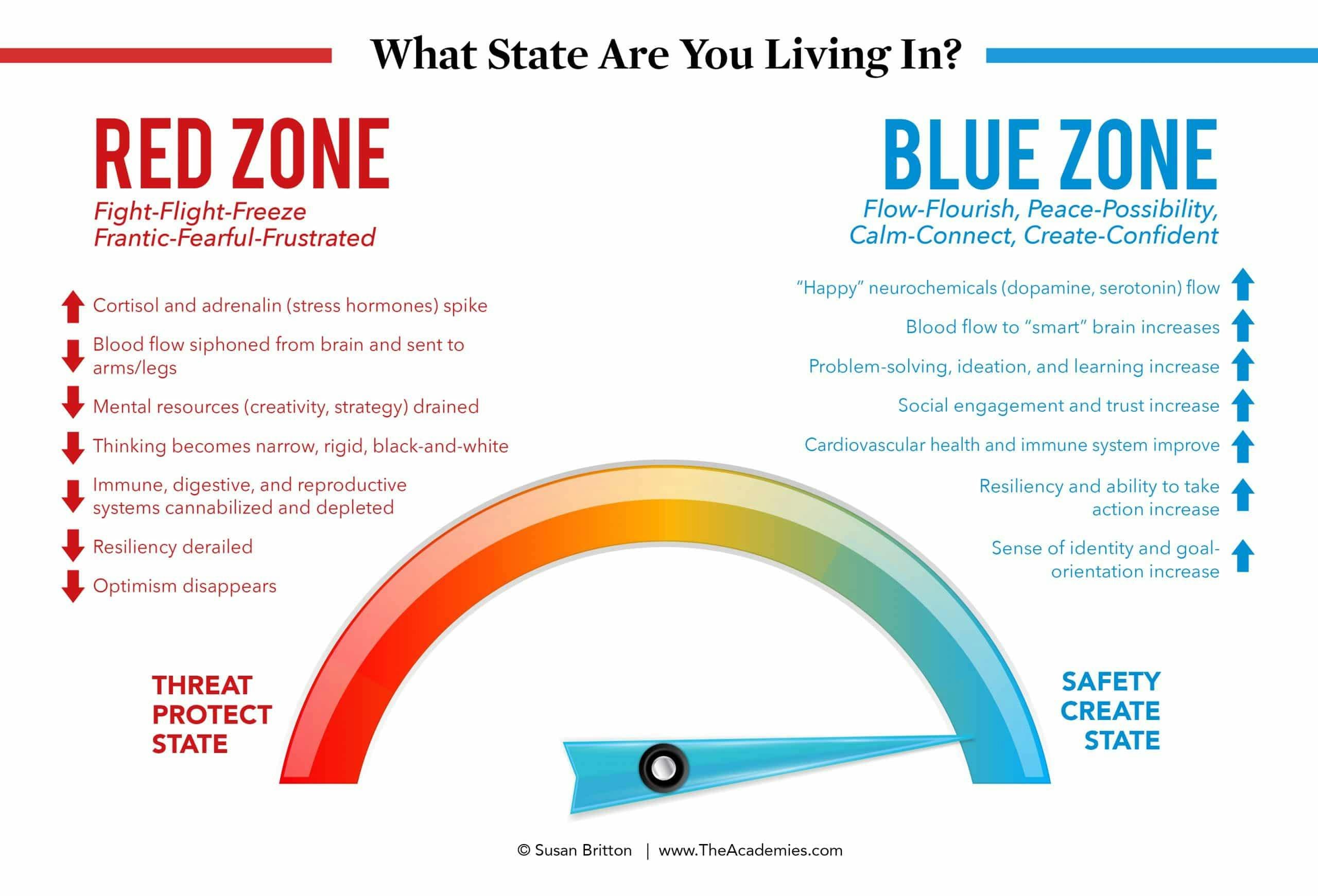
What We're Learning | April 2024
Here's what the Leading Edge team is learning about culture, executives, and boards this month.
Getting the Jewish workforce out of ‘the Red Zone’
The concept of Blue and Red Zones, introduced by Susan Britton, founder and president of The Academies, contrasts two physiological states — one of calm and creativity (the "Blue Zone"), and the other of heightened stress and fear (the "Red Zone"). Barry Finestone, president and CEO of the Jim Joseph Foundation, emphasizes the damaging effects of being in the Red Zone for over five months for the Jewish community and the people who make it function, and warns of a “brain drain” that would accentuate an already acute workforce and leadership pipeline problem. He urges the Jewish workforce to get out of the Red Zone by making jobs more manageable, compensating our field better, and doing more to activate boards to help.
READ MORE
CULTURE

Book: Gray Areas: How the Way We Work Perpetuates Racism and What We Can Do to Fix It
While organizations make internal and public pledges to honor and achieve “diversity,” inequities persist through what author Adia Harvey Wingfield calls the “gray areas:” the relationships, networks, and cultural dynamics integral to companies that are now more important than ever. In this book, she demonstrates the scope and breadth of gray areas and offers key insights and suggestions for how they can be fixed to create workplaces that reflect America’s increasingly diverse population.
READ MORE

How To Address Overlooked Mental Health In High-Performance Cultures
The pandemic may be receding into the past, but employees are still languishing. In 2024, a survey of 152 large employers in the United States found that 77% indicated an increase in mental health issues among their workforce during 2023, compared to 44% in 2023. Here, a closer look at less conspicuous stressors that are negatively impacting your employees’ wellbeing — and what leaders and managers can do about them.
READ MORE
EXECUTIVES

Should We Put Out a Statement?
The conversations around putting out a statement, often after some major news event, are often as much about internal disagreements as they are about public statements. Before deciding whether or not to issue a statement, therefore, organizations should first seek to establish internal clarity, a tolerance range, and an advocacy strategy. To ensure productive dialogue amidst passionate disagreements, organizations should set explicit goals to build a culture of respect across differences in deeply held beliefs, and plentiful, practical opportunities to make that culture real.
READ MORE

Martyrdom isn’t a Jewish value: Rethinking nonprofit leadership and sustainability
In nonprofit leadership, particularly within the Jewish community, the belief persists that self-sacrifice, even to the detriment of one’s well-being, is a hallmark of commitment and success — even though research and best practices indicate otherwise. Martyrdom, especially when misconstrued as necessary for organizational success, actually contradicts Jewish values, which champion life and well-being. Prioritizing profit and personal well-being is a moral imperative, aligning our operations with our values and ensuring our sustained ability to serve.
READ MORE
BOARDS

Funders supported Israel in crisis. Now we need to help build a better future.
Nearly six months since Israel’s deadliest day and with the ensuing war ongoing, the Jewish philanthropic community must continue to invest in interim and longer-term recovery with the same urgency and shared purpose we did in the days and weeks after Oct. 7. Lisa Eisen and Rachel Monroe share their vision for funders to elevate and invest in women’s leadership, listen and learn from communities across Israel, and be ready and flexible in addressing needs as they emerge.
READ MORE

How are Jewish boards different from all other boards?
Alicia Oberman (Senior Advisor, Board Leadership, Leading Edge) shares her insights on the ways Jewish boards are similar to and different than others, based on a new report by Leading Edge, “Jewish Nonprofit Boards: CEO Perceptions & Actions for Better Governance,” which shines a light on how CEOs of Jewish nonprofits perceive their boards and compares it with perceptions of boards in the general nonprofit sector.
READ MORE
MORE:
- Forbes: The Crucial Role Of Boards In Advancing Organizational Equity
- Fund the People: How Funders Can Support Nonprofit Workers in the Age of Burnout (Special Podcast Series)
- The Chronicle of Philanthropy: Racial Justice Programs Under Fire: Foundations Are Running Scared When They Should Double Down
About the Author

Leading Edge mobilizes Jewish organizations to become places where great people deliver great impact.
Loading footer...


